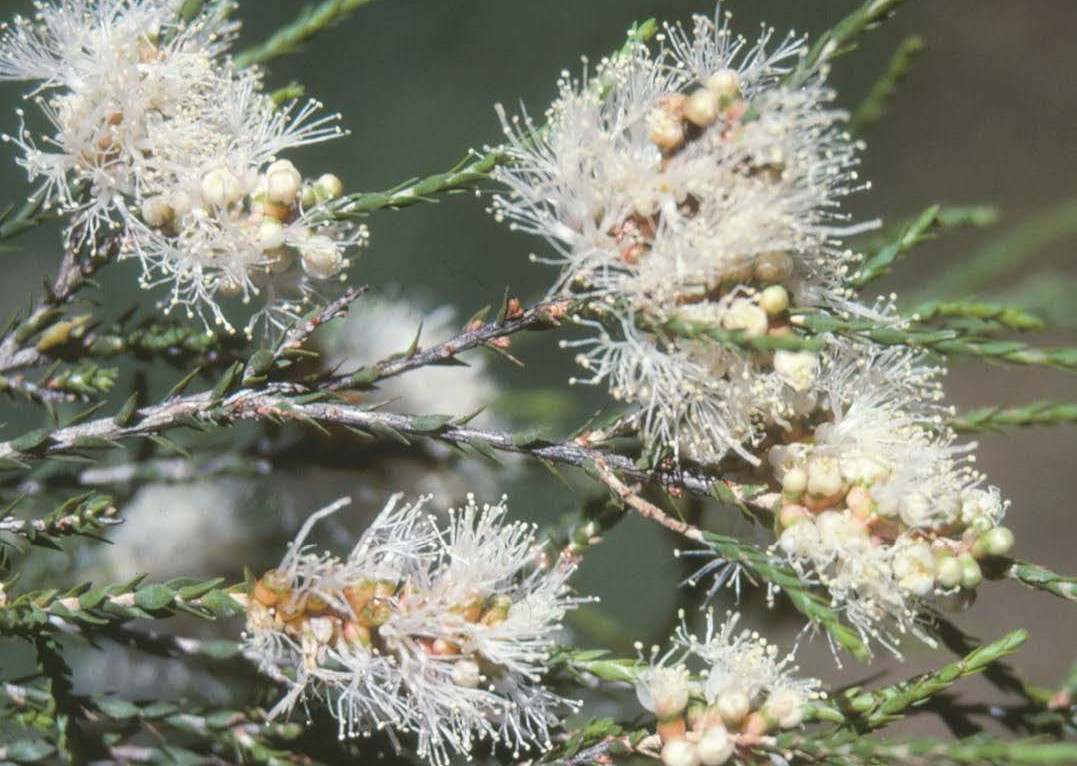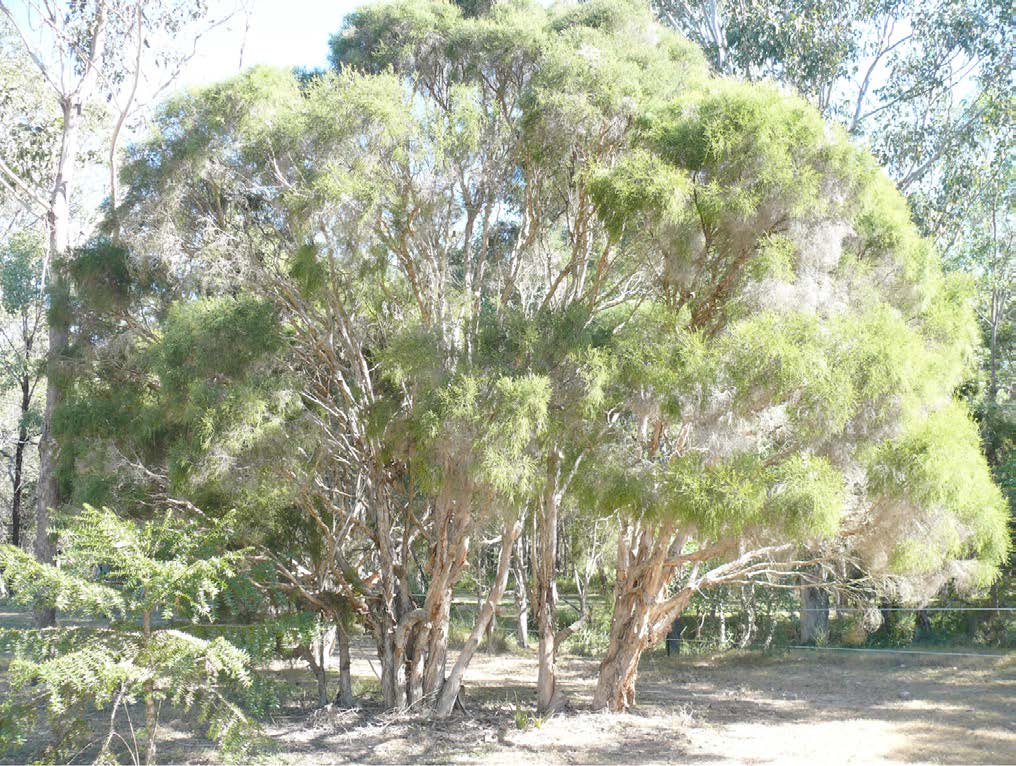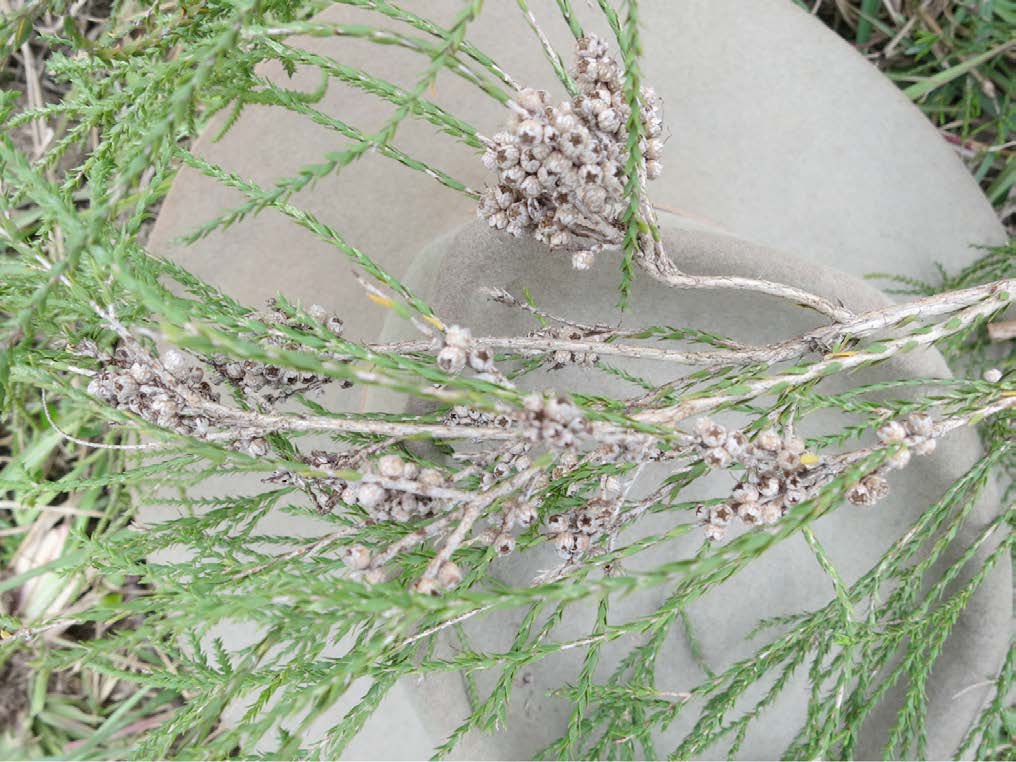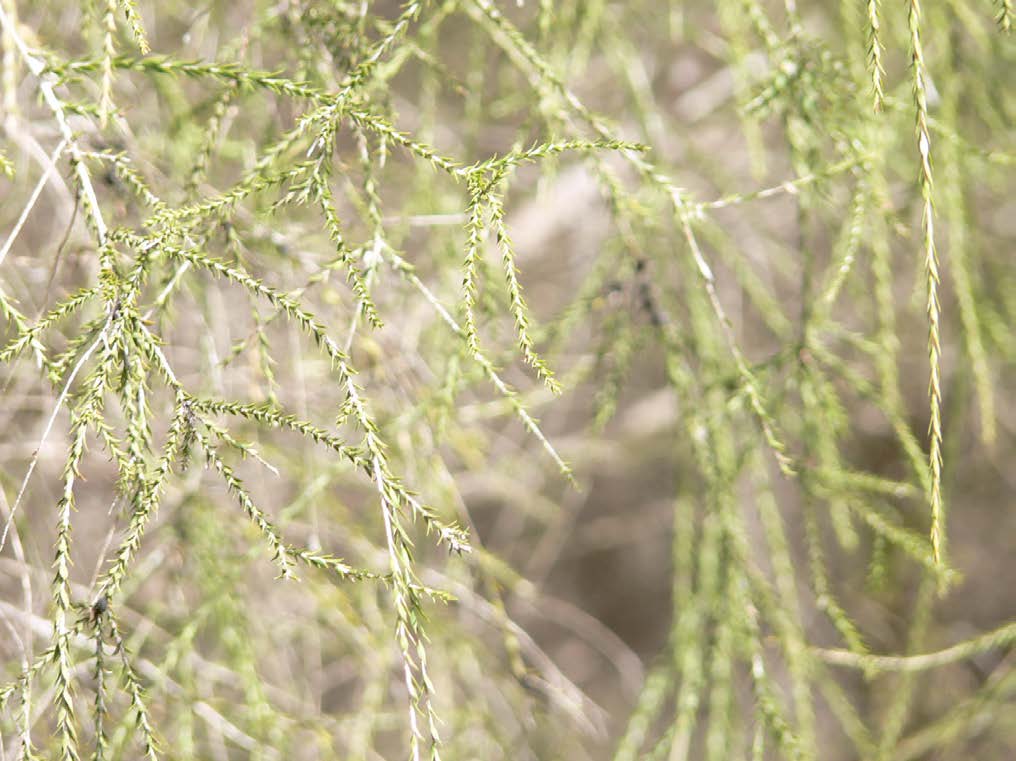Reducing impacts on Swamp tea tree (Melaleuca irbyana)
This guideline will help you protect Melaleuca irbyana on your land from development impacts.
The swamp tea tree is an endangered tree that grows around the Jimboomba and Waterford West areas in Logan. It is only found around Beaudesert, Boonah, Logan, Ipswich, Laidley and Esk. Fewer than 10 percent of the original swamp tea tree forest remains.
You can see swamp tea trees in Logan at:
- Henderson Reserve
- Blackwood Reserve
- Moffatt Park.
Legislative protection
Less than 10 percent of original Melaleuca irbyana forest remains. Because it is critically endangered there is great concern for its survival.
Melaleuca irbyana is protected under local, state and federal legislation:
- Nature Conservation Overlay
- Nature Conservation Act 1992
- Vegetation Management Act 1999
- Environment Protection and Biodiversity Conservation Act 1999.
Landowner responsibilities
As a landowner, if you intend to carry out an action that may impact upon Melaleuca irbyana you must:
- refer it to the Queensland State Government for assessment and approval Queensland Department of Environment and Heritage Protection on 13 74 68
- refer it to the Federal Government if there will also be a likely impact on an irbyana community Department of Sustainability, Environment, Water, Population and Communities on 1800 803 772
Identifying the swamp tea tree
Melaleuca irbyana (M. irbyana) are small trees that grow 8 metres to 12 metres in height.
They have thick, spongy, papery bark.
Leaves are tiny, stalkless and pointed 5 millimetres or less long, arranged in a spiral and pressed close to the branchlets.
The tree flowers in spring to summer with 20 millimetres fluffy, creamy-white flower spikes. Flowers produce small woody seed capsules to 3 millimetres.




Ecological communities
Melaleuca irbyana forms communities that occur in two structural forms:
- the more common form - a dominant Eucalypt canopy with an understorey containing thickets, 8 metres to 12 metres in height
- the less common form - an open forest or thicket with emergent Eucalypt trees
The understorey is sparse and may include grasses, sedges, and herbs with a few shrubs, vines and possibly orchids.

When is it part of a community?
We have clear descriptions of M. irbyana communities. However, it is not clear at what point a single tree, or a small group of trees become a community.
Importantly, an individual tree may still contribute reproductively to a community. Or it could potentially regenerate, and in time create a community.
We define an M. irbyana community as:
- a place where Melaleuca irbyana occur in a patch size of 0.25 hectares or greater, or
- a place where a patch of Melaleuca irbyana less than 0.25 hectares adjoins a second patch, and the sum of the patches is greater than 0.25 hectares.
Our definition derives from the Melaleuca irbyana (swamp tea-tree) Community 1:25,000 Scale Mapping Project (Ryan, 2010).
We currently use the M. irbyana mapping that resulted from this project. And importantly, we use the same methodology on unmapped areas to create consistent maps of M. irbyana.
What do we know about Melaleuca irbyana?
The swamp tea tree is found in small number of restricted sites in north-eastern New South Wales and south-eastern Queensland, usually on sedimentary rocks and alluvial soils.
It likely depends up on specific groundwater and /or surface water hydrology for survival.
Communities are susceptible to the negative impacts of
- weed invasion
- increase in wind and evaporation
- solar radiation changes
- temperature changes.
How can we protect Melaleuca irbyana?
To protect remaining patches of M. irbyana and ensure its survival we must achieve two main outcomes:
- Protect it from edge effects, like weeds, wind, fire and increased solar radiation.
- Protect nearby sources of natural ground water and surface water hydrology.
Researchers are still learning about M. irbyana. Until more is known, the following principles are recommended:
- Postpone development decisions where irbyana exists until detailed scientific understanding is gained
- Buffer areas of irbyana to manage edge effects and minimise changes to groundwater and surface water hydrology.
Edge effects and recommendations
Individual M. irbyana plants are hardy and tolerant, but we do not know the reproductive effects on plants located close to development areas.
Communities of M. irbyana may experience edge effects like weed invasion, an increase in wind, increase in evaporation, increase in fire effects, and changes in solar radiation and thermal variation.
To protect M. irbyana, surround it with a 50 metre edge effects buffer zone.
The buffer zone should:
- Be vegetated with native vegetation, to the original Regional Ecosystem
- Be sized and structured to protect the core M. irbyana area from the effects of
- weed invasion
- increased wind and increased evaporation
- changes in solar radiation and thermal variation.
Any site works should also be compatible with the outcome to minimise edge effects.
Our recommendations are based on advice from the Australian Government (Matthew White, Director Ecological Communities, pers. comm. 2012).

Use buffer zones to protect Melaleuca irbyana. A 50 metre buffer zone for edge effects and 100 metre buffer zone for hydrology protection.
Hydrology protection and recommendations
We do not yet know M. irbyana hydrological requirements, but do know it grows in:
- tea-tree clay soils (seasonal cracking clay soils) that drain slowly after heavy rain (these become waterlogged and form temporary ponds)
- perched water tables where runoff flows overland rather than in distinct drainage lines
- areas with pooling water
- areas with water run-off, like hillsides.
Its deep root system suggests that M. irbyana relies somewhat on groundwater supplies. Changes to the groundwater hydrology likely impact the long-term viability of M. irbyana ecological communities.
We recommend a 100 metre hydrology protection buffer zone. In this zone, you should:
- maximise infiltration
- minimise change to surface water and groundwater hydrology.
To achieve this, make sure the infiltration and overland flow amounts before and after development remain constant.
Further research
There is much that we still need to learn about Melaleuca irbyana. Finding out more can help us refine mapping and identify potential future habitat for revegetation.
Reliance on groundwater and aquifers
We need to understand M. irbyana and its relationship with and reliance on groundwater and aquifers. If M. irbyana does rely on groundwater, we must act to identify and protect aquifer recharge areas from development, including
- wetlands (small wetlands especially)
- streams
- areas where water pools.
Areas with high perimeter to volume ratio are the most important.
Impacts from lowered catchment permeability
We need to find out how development resulting in reduced catchment permeability can change:
- water table levels
- amount of run-off
- sedimentation
- water flow
- soil compaction.
And how these factors impact M. irbyana.
New tree growth
We need to find out about the general growth of new M. irbyana trees (reproductive output).
In Logan, we need to investigate individual and scattered M. irbyana trees that grow close to buildings and roadsides, and how important these are to maintaining genetic variation in the species.
Find out more
You can find out more about the Swamp tee tree (Melaleuca irbyana) from the Australian Government Department of Climate Change, Energy, the Environment.
References
- Department of Sustainability, Environment, Water, Population and Communities (2012). Swamp Tea-tree (Melaleuca irbyana)
- Forest of South-east Queensland in Community and Species Profile and Threats Database, Department of Sustainability, Environment, Water, Population and Communities, Canberra. Available from: http://www.environment.gov.au/sprat
- Ryan, T. S. (2010) Melaleuca irbyana (swamp tea-tree) Community 1:25,000 Scale Mapping Project. Department of Environment and Resource Management, Brisbane.